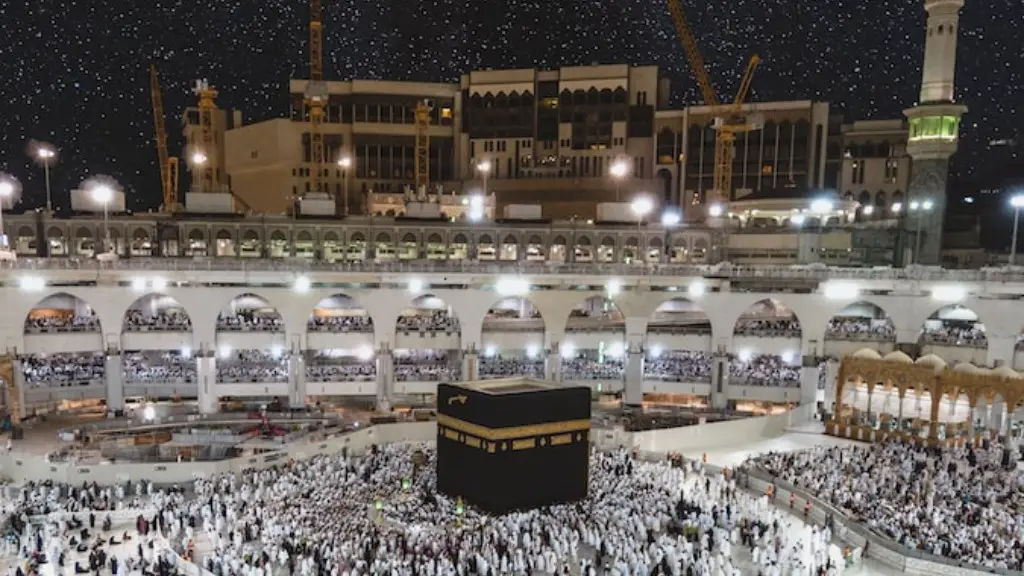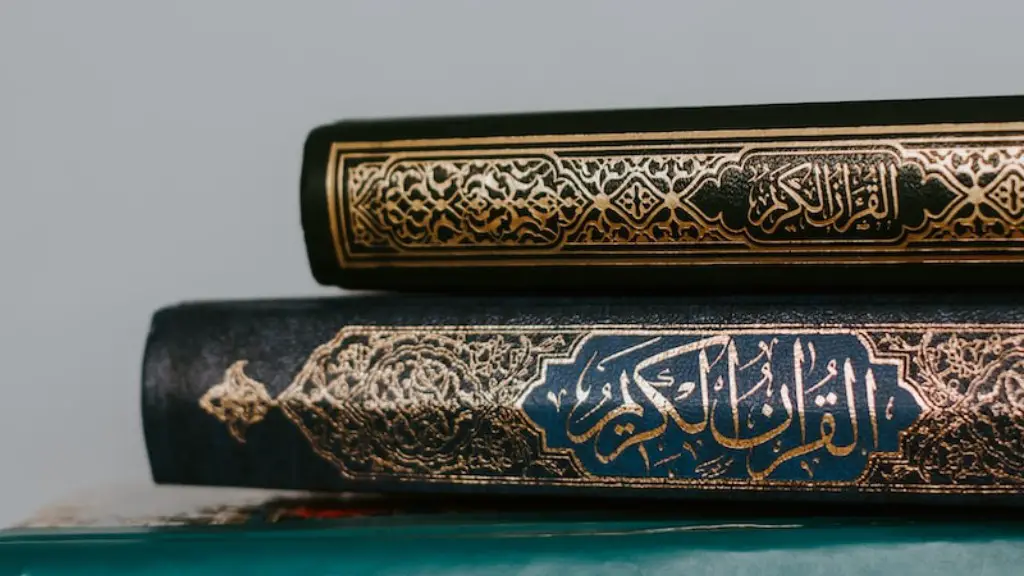Who Is The God Of Gods In Hinduism?
Hinduism is one of the oldest religions in the world with a formidable following. It is home to a plethora of deities and deities, each with their own stories and representation. But among these deities, who is the God of Gods? A question commonly asked by followers of the faith.
The answer lies with the concept of Brahman, the absolute reality of existence. Brahman is the highest truth of existence and is seen as the Supreme Being, the ultimate divine love and cosmic consciousness powers within Hinduism. As the ultimate divinity, Brahman transcends all other beings, including the aspects of Hindu gods and goddesses.
Brahman can be seen in two forms: the Transcendental and the Manifest. The Transcendental Brahman is described in the Upanishads as being beyond any other form of existence and comprehension, while the Manifest Brahman is addressed as the creative energy and infinite source of life within Hinduism. This bi-polar description is necessary in order to understand the differences between Brahman and the Hindu gods.
In the Hindu tradition, Brahman is seen as the God of Gods, the source of all reality, including every aspect of creation. In many texts, Brahman is also seen as the god of gods, the absolute, ultimate, and creative power of all deities. Brahman is associated with, but not limited to, qualities such as all-loving and all-pervading.
While Brahman is the God of Gods, it is important to remember that it is not the same as the gods and goddesses of Hinduism. The gods and goddesses who are revered in the Hindu tradition each represent specific facets of Brahman, such as compassion, wisdom, knowledge, or power. Through the worship of the gods and goddesses, one can experience the absolute and unifying power of Brahman.
To understand the power of Brahman, it is important to consider the relationship between creation and reality. Hinduism teaches that all of creation is a manifestation of reality, and that ultimately, Creation and Reality are One. From this perspective, it is easy to understand why Brahman is seen as the omnipresent God of Gods.
The Importance Of Bhakti
To experience the God of Gods in Hinduism, it is necessary to engage in Bhakti. Bhakti Yoga is a form of passionate devotion to a deity, in particular Shiva and Vishnu, the two primary deities of Hinduism. Through this practice, one is able to cultivate a deep relationship with the divine, and to experience the absolute unity at the core of all existence.
It is also important to remember that Bhakti is not simply an act of worship, but also a pathway to enlightenment and realization. By engaging in Bhakti and meditating on the various aspects of the Deity, one can come closer to understanding the unity behind existence and the true essence of Brahman. This helps one to experience a deeper and more profound connection to the source of life and to the Reality behind all forms.
Through Bhakti, one can come to see that ultimately all forms of life are expressions of the same unity of existence, and this is the ultimate truth of Brahman as the God of Gods in Hinduism.
Overlapping Connections With Other Religions
The concept of “God of Gods” is not exclusive to Hinduism and can be found in other traditions as well. For example, in the Judaeo-Christian traditions, the idea of the God of Gods is closely related to the figure of the Father. This is because the God of Gods is seen as the absolute creator and sustainer of life, just as the Father is seen as the ultimate source of life in the Judeo-Christian tradition.
In the Islamic tradition, the idea of the God of Gods is closely associated with the concept of Allah as the source of all existence and knowledge. As such, the figure of Allah is seen as the ultimate source of life and power, much in the same way as Brahman is seen in Hinduism.
In the Eastern philosophical traditions, the concept of the God of Gods is closely linked to Taoism and the idea of the Tao, the ultimate and natural source of life. In Taoism, the Tao is seen as the ultimate source of all existence and fundamentally pure, much in the same way as Brahman is thought of as the pure and absolute source of life in Hinduism.
Symbolism And Cosmic Consciousness
The concept of God of Gods in Hinduism can also be understood from a symbolic perspective. In Hindu tradition, Brahman is often represented by symbols such as the Om, the Swastika, and the Sun and Moon. These symbols are said to represent the cosmic consciousness at the core of all existence and the oneness of life.
In Hindu mythology, Brahman is often equated to Surya, the Sun God and the source of creation and energy in the universe. Similarly, Brahman’s creative power is also demonstrated in the power of the Full Moon. In Hindu tradition, the Full Moon is seen as a symbol of abundance and the reminder of divine grace. In this way, the symbolism of the Full Moon, the Swastika and the Om in Hinduism are all part of the greater symbolism of the God of Gods in Hinduism.
Thus, the God of Gods in Hinduism can be understood as the ultimate source of all life and existence, the power behind all creation, and the absolute origin of all things. It is through this understanding that we come to appreciate the power and beauty of Brahman, the God of Gods in Hinduism.
The Symbology Of The Trimurti
In Hinduism, the concept of God of Gods is also expressed through the Trimurti, the three central deities of Brahma, Vishnu, and Shiva. Each of these three deities represents a different aspect of Brahman and of the fundamental nature of reality. Brahma is the creator, Vishnu is the preserver, and Shiva is the destroyer. Together, these three gods represent the cycle of life and death and the unity of existence.
The Trimurti represent the three-fold aspects of Brahman, the source and sustainer of life. The Trimurti demonstrate the power of Brahman to manifest itself in different ways and to manifest and create different forms of existence from the same source.
The Trimurti thus provide a model of the way in which Brahman can manifest itself in different forms. The three gods are said to work together to express the power of Brahman and to embody the unity of all Creation. In this way, the Trimurti provide a tangible model of Brahman as the source of all life and existence.
The Role Of The Devi In Hinduism
In Hinduism, the concept of God of Gods is also expressed through the Devi, the feminine form of Brahman. In many texts, the Devi is seen as the personification of Brahman and the embodiment of divine power and unity. The Devi represents the power of Brahman to create and sustain life, and to express itself in many forms.
In Hindu mythology, the Devi is often seen as the consort of Shiva and Vishnu, embodying the feminine aspect of Brahman. The Devi is seen as the ultimate source of creation, life, and love. She is seen as the Shakti, or power, behind the male gods, and as the embodiment of divine grace and compassion. In this way, the Devi symbolizes the power of Brahman to bring unity and balance to all aspects of life.
By understanding the concept of the Devi and the power of Brahman to take on many forms and to bring unity to all aspects of Creation, we come to appreciate the power of God of Gods in Hinduism.
Conclusion
In Hinduism, the concept of God of Gods is that of the ultimate source of all existence, the absolute source of life and unity. This is expressed through the various gods and goddesses of Hinduism, each of which represent a different aspect of Brahman.
Through Bhakti Yoga, the practice of devoted worship to a deity, one can experience the absolute power of Brahman and come to understand the unity behind all forms of life. This can be further explored through the symbolism of the Trimurti and the Devi, both of which embody the different forms of Brahman and represent the power of the ultimate God of Gods in Hinduism.

